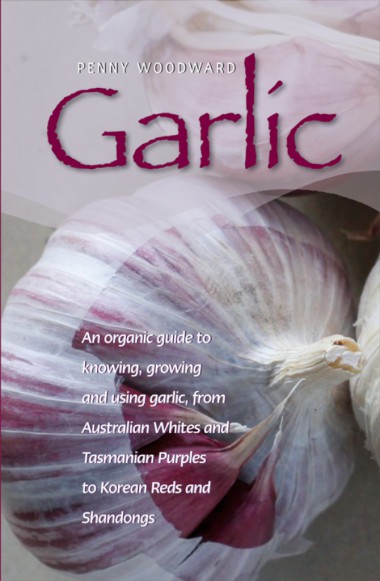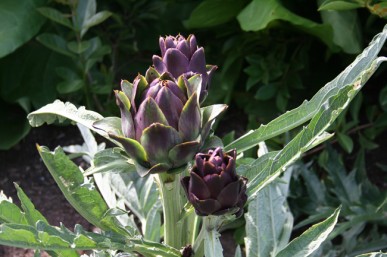An organic guide to knowing, growing and using garlic, from Australian Whites and Tasmanian Purples to Korean Reds and Shandongs.

I am thrilled to say that my new book has been released and is in bookshops and can be purchased online from my website shop . If you would like your copy signed to a specific person, then send me an email through the contact page. I’ll be talking about garlic and the book on radio over the coming weeks and there will be reviews in newspapers and magazines, so keep an eye out for them.
The book has taken me three years to write, but has been much longer in it’s gestation. It covers everything from more than 50 different cultivars of garlic, to
guidelines for growing organic garlic around the country as well as interviews with
twelve Australian garlic growers telling you how and where they grow their garlic.
There are also recipes for cooking, preserving and smoking garlic and even making your own black garlic as well as medicinal uses and an extensive list of growers and suppliers.
This book starts to make sense of the confusion surrounding garlic and explains that garlic is not just garlic, it is Creole, Rocambole, Purple Stripe, Turban, Silverskin and more.
These are a couple of short extracts from the book, starting with Garlic Thoughts Read more

Purple artichoke, 'Violetta'
Artichokes (Cynara scolymus) are striking plants that are both beautiful and useful. The arching soft grey green leaves and huge vibrant purple thistle flowers make a dramatic statement and add structure and contrast foliage. But they do take up a lot of space so make sure you’ve got plenty of room before planting. These short lived perennials are native to the Mediterranean region and take about 6 months from planting until they produce flower buds. The most readily available cultivars are Green globe, Violetta and Imperial Star.
Artichokes can be grown from seed but seed germination is often patchy and the quality varies enormously, so it is better to grow new plants by purchasing one or detaching and replanting a rooted offset. To remove offsets push a spade down carefully between the main stem and the offset so that you remove the small plant with leaves and roots. Trim off any outer leaves and woody roots and replant. Artichokes are best planted in mid to late winter in frost-free areas, or spring where there are frosts. Read more
 Organic Gardener’s Essential Guide: Vegies A – Z
Organic Gardener’s Essential Guide: Vegies A – Z
Rising costs have combined with anxiety about food security to create a critical moment for people considering growing their own food. Right on cue is “Vegies A-Z”. It’s the third OG special (after Getting Started, $10.00, and Fruit, $10.00). Vegies A-Z combines new material with recent OG articles from reliable writers. My quibble with this third volume is that there is not more on soil preparation, which is crucial. Perhaps that’s in Getting Started? Perhaps the three volumes need to be read seriatum, and would make a great gift, possibly to yourself. PW is a major contributor. — AMS.
Note: There is more on soil preparation in Getting Started which is unfortunately currently out of print. A reprint is planned for later this year
Borrow a copy from your library, buy one from your local newsagent or go to the store on this website and buy a copy online



